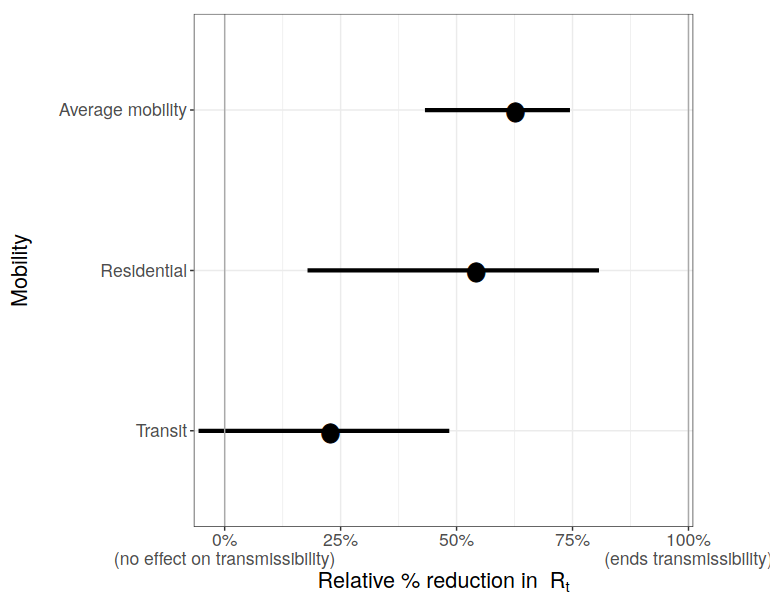Good to see this analysis, but misleading headline. 24 states have *point estimates* over 1, but uncertainty in estimates is large. Let& #39;s consider null hypothesis that Rt=0.95 everywhere. Then would expect 19 states with estimates above 1 (eyeballing stdev=0.17 from fig. 4). https://twitter.com/MRC_Outbreak/status/1263478146164240396">https://twitter.com/MRC_Outbr...
This is assuming Gaussian errors which isn& #39;t quite right (it& #39;s a Bayesian model) but I think is close. 24 is not far from 19 and could be random chance, or could be real. The "right" way to handle this is via FDR control; would be great to see that analysis.
I have some other issues with the reporting. It suggests that these are based on recent data, but it& #39;s actually *extrapolating* the effect of mobility increases, based on fitting mobility -> deaths on past data.
Better summary of paper: "Assuming mobility is primary effect of lockdowns and has linear effect on growth, Rt is close to 1 in many places, but with high uncertainty."
This brings us back to my earlier discussion of why it& #39;s hard to estimate Rt accurately, and underscores the need to report uncertainty. https://twitter.com/JacobSteinhardt/status/1256079627782512642">https://twitter.com/JacobStei...
The paper treats uncertainty weirdly in other places too. For instance: "We find time spent in transit hubs does not have a significant effect on transmission...in contrast to what we observed in Italy, and likely reflects higher reliance on car...in the US". For this estimate:
In contrast they conclude residential mobility does have an effect, even though the two have overlapping confidence intervals. I think this is probably reading into noise.
I do want to note that, as far I can tell, the statistical modeling is pretty reasonable. My issues are with how uncertainty is treated in the text. And there are places where the authors bend over backwards to point out limitations. Overall interesting read.

 Read on Twitter
Read on Twitter


